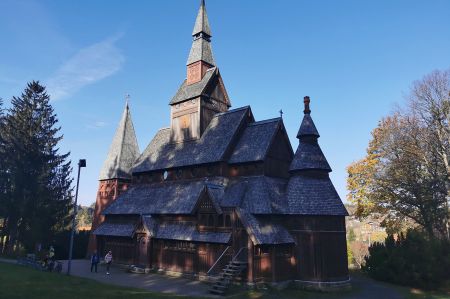Gustav-Adolf-Stabkirche - wooden church in Hahnenklee
- Written by Portal Editor
Another interesting encounter along the way on the way to Goslar: The wooden stave church in Hahnenklee was built entirely without screws and nails. We were on our way from the Prahljust campsite near Clausthal-Zellerfeld when the cycle route led us to the edge of Hahnenklee-Bockswiese, where we came across the stave church.
The highly interesting wooden building made us investigate immediately and we found out that until the beginning of the 20th century the top floor of the former school building near today's Hindenburgplatz served as a place of worship.
Professor Mohrmann designs the stave church
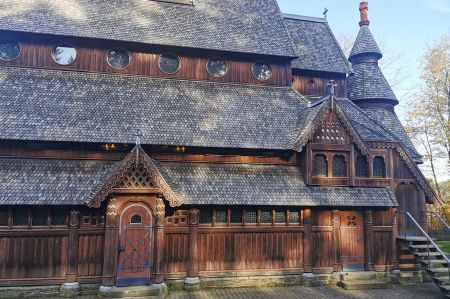 The highly interesting wooden building made us investigate immediately and we found out that until the beginning of the 20th century the top floor of the former school building near today's Hindenburgplatz served as a place of worship. With growing tourism, this space became too small, especially during the summer months.
The highly interesting wooden building made us investigate immediately and we found out that until the beginning of the 20th century the top floor of the former school building near today's Hindenburgplatz served as a place of worship. With growing tourism, this space became too small, especially during the summer months.
For this reason, the consistory architect Karl Mohrmann from Hanover was commissioned to design an independent church building for Hahnenklee. During a study trip to Norway, Prof. Mohrmann saw the stave churches there and drew some of them. He then suggested building a stave church in Hahnenklee, and justified this, among other things, by the fact that at the time of the Christianization of Germany there were stave churches throughout northern Germany and this architectural style was therefore also native here.
Free replica of the Borgund stave church
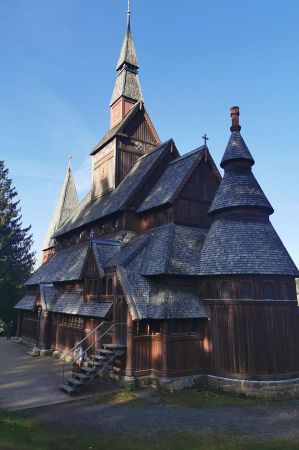 The Hahnenklee stave church was built between 1907 and 1908 by Hahnenklee craftsmen and made of spruce wood cut on the north side of the Bocksberg. Although, strictly speaking, it is more of a replica, an "imitation" of the real stave church that is over 800 years old, its unusual appearance quickly made it well known. In contrast to the Hahnenklee stave church, the Norwegian stave churches are much smaller (approx. 50 seats) and, due to the lack of larger windows, are very dark inside. The building is ultimately a free replica of the Borgund Stave Church. Some adaptations were necessary to accommodate 350 seats in the church. The construction of the church began in 1907 and its consecration took place on June 28, 1908.
The Hahnenklee stave church was built between 1907 and 1908 by Hahnenklee craftsmen and made of spruce wood cut on the north side of the Bocksberg. Although, strictly speaking, it is more of a replica, an "imitation" of the real stave church that is over 800 years old, its unusual appearance quickly made it well known. In contrast to the Hahnenklee stave church, the Norwegian stave churches are much smaller (approx. 50 seats) and, due to the lack of larger windows, are very dark inside. The building is ultimately a free replica of the Borgund Stave Church. Some adaptations were necessary to accommodate 350 seats in the church. The construction of the church began in 1907 and its consecration took place on June 28, 1908.
Outdoor pagan symbols
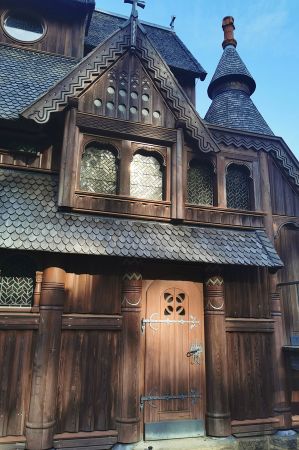 In the beginning, the sanctuary could be separated with movable walls and used as a winter church. The Hahnenklee stave church has undergone extensive renovation work several times during its existence and thereby changed the appearance of its facade. The last, very complex renovation was carried out in the years 2000 to 2006.
In the beginning, the sanctuary could be separated with movable walls and used as a winter church. The Hahnenklee stave church has undergone extensive renovation work several times during its existence and thereby changed the appearance of its facade. The last, very complex renovation was carried out in the years 2000 to 2006.
Since the "real" stave churches arose in the period of Christianization, they still contain many pagan symbols such as dragon heads or snake symbols. These can also be found in abundance in Hahnenklee.
Many parallels with shipbuilding are also very striking: Since the first stave churches were built by the Vikings, they took over many elements of shipbuilding. The chandelier in Hahnenklee, for example, is modelled on a ship's steering wheel, and the upper windows resemble portholes.
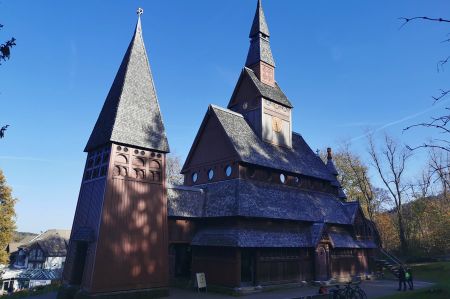 Especially in the 1960s and 1970s, the stave church was a very popular wedding church. In record years, 300 weddings took place there each year.
Especially in the 1960s and 1970s, the stave church was a very popular wedding church. In record years, 300 weddings took place there each year.
The location of the church was a compromise between the two districts of Hahnenklee and Bockswiese: the church was placed on the outskirts of Hahnenklee, which was closest to Bockswiese. In the 1950s, the school was built 200 meters to the south in a similarly "central" location. According to a survey by NDR, it ranks 29th among the 100 most important buildings in northern Germany.
Karl Mohrmann memorial plaque in the Gustav Adolf stave church
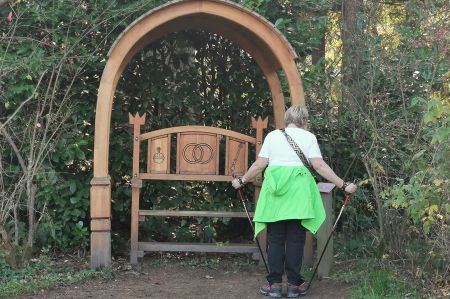 Karl Mohrmann grew up in Einbeck, the son of the painter Friedrich Mohrmann. After graduating from 1873, he studied construction as a student of Conrad Wilhelm Hase in Hanover and Berlin. In 1886 he became a lecturer in civil engineering in Hanover. In 1887 he went to Riga as a full professor of architecture. In 1892 he returned to the Technical University of Hanover, where he succeeded Conrad Wilhelm Hase as Professor of Medieval Architecture and Design of Public Buildings.
Karl Mohrmann grew up in Einbeck, the son of the painter Friedrich Mohrmann. After graduating from 1873, he studied construction as a student of Conrad Wilhelm Hase in Hanover and Berlin. In 1886 he became a lecturer in civil engineering in Hanover. In 1887 he went to Riga as a full professor of architecture. In 1892 he returned to the Technical University of Hanover, where he succeeded Conrad Wilhelm Hase as Professor of Medieval Architecture and Design of Public Buildings.
From 1898, Karl Mohrmann worked as a part-time consistorial master builder for the Evangelical Lutheran Church in Hanover, building or restoring churches, vicarages and private houses. In 1909 he received the title of secret building officer. From 1911 to 1913 he was rector of the Technical University. Mohrmann travelled to Italy, Denmark, Sweden, Norway, Great Britain, Africa and America, among other places.
Mohrmann was also heavily involved in society. For example, in 1901 he was a co-founder and from 1912 to 1914 chairman of the Lower Saxony Heimatbund, was chairman of the Bauhütte zum Weißen Blatt founded by Hase, was on the board of the Hanover Art Association and chairman of the heraldic association “Zum Kleeblatt”, founded in 1888, supporting association of the Lower Saxony coat of arms.
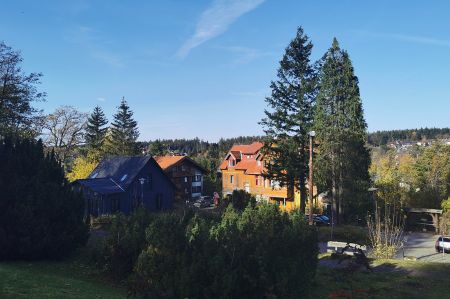 After his retirement in 1924, he moved the focus of his life to St. Georgen near Freiburg im Breisgau, where he owned a small villa. He died there shortly before he was 70 years old. His urn was buried in the Strangrieder Friedhof in Hanover.
After his retirement in 1924, he moved the focus of his life to St. Georgen near Freiburg im Breisgau, where he owned a small villa. He died there shortly before he was 70 years old. His urn was buried in the Strangrieder Friedhof in Hanover.
Buildings
- Evangelical Lutheran Martin Luther Church in Bremen-Blumenthal (1901–1902)
- Evangelical Lutheran St. Ansgari Church in Oldenburg-Eversten (1902)
- Bethlehem Church in Hanover-Linden-Nord (1902–04)
- Evangelical Lutheran John's Church in Hanover-Misburg (1902-1904)
- Evangelical Lutheran Jerusalem Church in Wendeburg-Rüper, district of Peine (1906–1907)
- Evangelical Lutheran Church of St. Michael with vicarage in Bremen-Grohn (1906–1908)
- Gustav Adolf stave church in Hahnenklee (1907–08)
- Evangelical Lutheran St. Briccius Church in Lahstedt-Adenstedt (1922)
Please read as well:
Market Church of the Holy Spirit in Clausthal-Zellerfeld
St. Sophia Church (Crkva Sveta Sofija) in the center of Ohrid
